This was published 7 years ago
Astounding archaeology discovery places inland human occupation of Australia at 49,000 years
By Marcus Strom
Archaeologists working with traditional Aboriginal owners in the northern Flinders Ranges have discovered astounding evidence of the earliest human habitation of inland, arid Australia.
The find has pushed back the date of such occupation by 10,000 years to about 49,000 years ago.
One of the traditional owners of the area, Clifford Coulthard, who is a co-author of the study, said the findings weren't really a surprise to him.
"Our old people know we've been here a long time," he said.
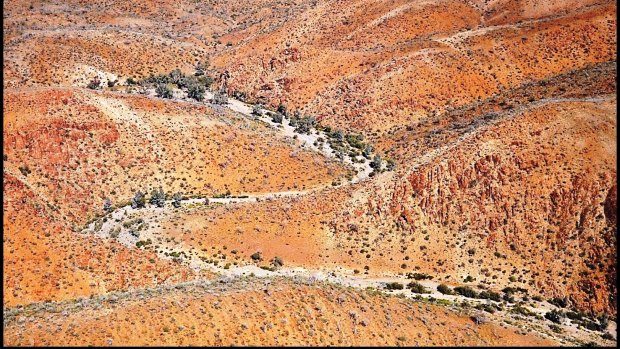
Aerial view of the northern Flinders Ranges where the rock shelter was discovered. Credit: Giles Hamm
The site, the Warratyi rock shelter in the traditional lands of the Adnyamathanha people, also has evidence of extinct megafauna, including the diprotodon.
The authors of the study, published on Thursday in Nature, said it finally settles the question of whether humans and megafauna overlapped chronologically.
"The idea there was no interaction between humans and megafauna has really been put to bed by the Warratyi evidence," said Lee Arnold from Adelaide University, one of the authors.
Just one of these finds would be remarkable on its own. But there are more.
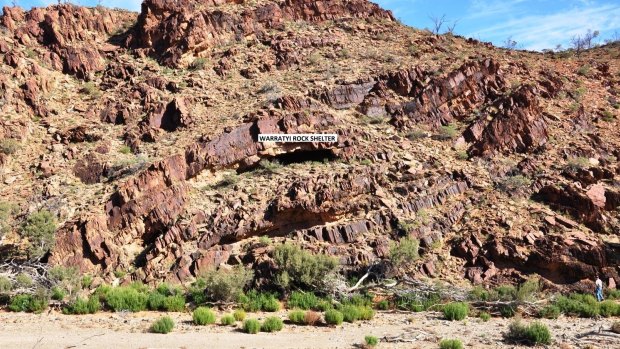
The Warratyi rock shelter elevated above local stream catchment. Credit: Giles Hamm
Giles Hamm, a PhD candidate at La Trobe University and lead author of the study, said the findings inside the cave include the "earliest known use of ochre in Australia and south-east Asia".
The archaeological treasures found in the shelter also include among the oldest-found examples of gypsum pigment, hafted and stone tools. The authors said these finds are up to 10,000 years earlier than any other known occurrence.
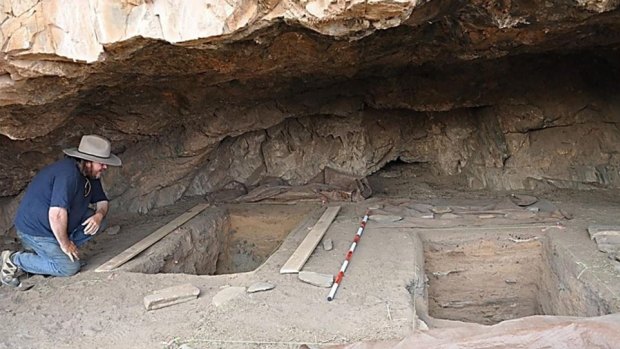
Giles Hamm inside the Warratyi rock shelter.Credit: Giles Hamm
Mr Hamm said their excavation of 3.3 cubic metres of soil revealed 4300 human artefacts and three kilograms of bone, 70 per cent of which was likely from the yellow-footed rock wallaby.
By carefully matching the depth of the found artefacts with carbon dating and a secondary method known as "single-grain optically stimulated luminescence" dating of quartz grains, Mr Hamm and his colleagues built up a picture of how frequently the shelter was used over nearly 50,000 years.
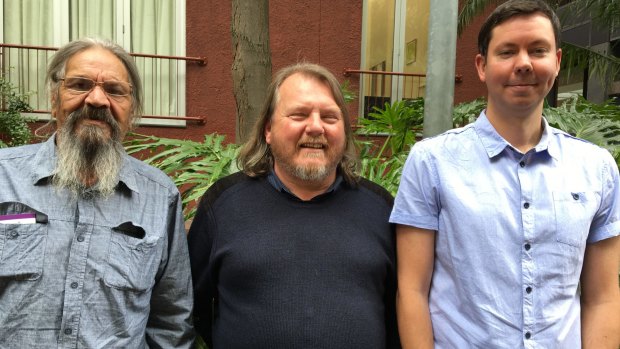
Study author and tradtional owner Clifford Coulthard (left) with lead author Giles Hamm and Lee Arnold (right).Credit: AusSMC
First usage was intermittent, with a 5000-year spike of bone remains and artefacts at about 40,000 years ago. Use declined from 35,000 years to about 24,000 years ago – a time when this part of Australia became "hyper arid", Mr Hamm said.
"We then see another spike in use from about 17,000 years ago," he said.

An artist's impression of the diprotodon, a rhino-sized wombat-like megafauna.Credit: Peter Trusler
Mr Hamm said when they first found the shelter they expected to find evidence of occupation from about 5000 or 6000 years ago.
"The first indication of its age was egg shells, emu shells from about 20,000 years ago," he said. They also found eggshell evidence of the presence of a large extinct megapode bird, "something like a huge Mallee fowl".
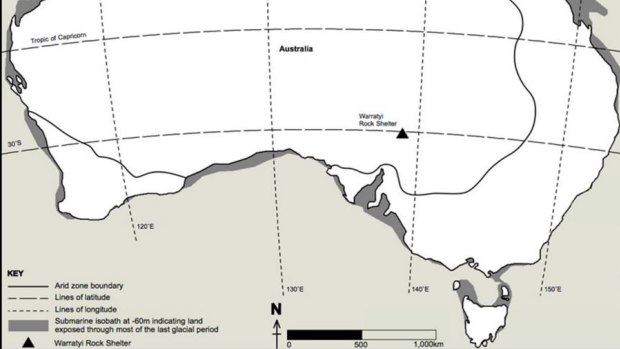
Location of the Warratyi rock shelter in the Flinders Ranges.Credit: Giles Hamm/Nature
The find of a bone fragment from a diprotodon in the shelter was significant, said Gavin Prideaux from Flinders University.
"There is no way a diprotodon could scale to that shelter. It must have been brought there," he said.
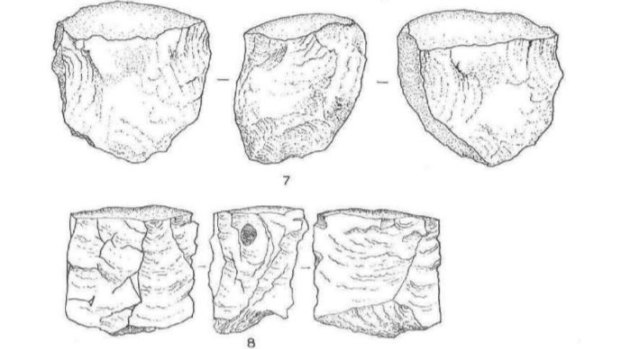
Sketches of the stone tools found inside the shelter.Credit: Giles Hamm/Nature
Professor Sue O'Connor at the Australian National University, who was not connected with the study, said: "The methodology of this study is as good as it gets. It's a very important site and a really significant find."
However, she raised a question about how the findings dates were presented, using "mean calibrated years" rather than a probability of an age within a range of dates.
Professor O'Connor said "everyone is keen to make their site sound older". However, she said her find of ochre at Carpenters Gap and this present discovery had "dates that overlap with our dates", while saying by email that "the Hamm discovery was likely older".
However, a more recent discovery she and Peter Hiscock at the University of Sydney announced this year of the world's oldest axe technology in the Kimberley included fragments of ochre, she said.
The age of that axe is within the same time span as that of the find announced on Thursday – between 49,000 and 46,000 years ago.
"We are finding new things all the time that shows how small our sample size is for this earliest period of human occupation of Australia," she said.
Mr Hamm said there are clear gaps in our knowledge of the interior. How did people travel through the continent, he asked.
"It's likely they travelled along the great river systems: the Barcoo, the Thomson, Diamantina. But we clearly need to find out more."